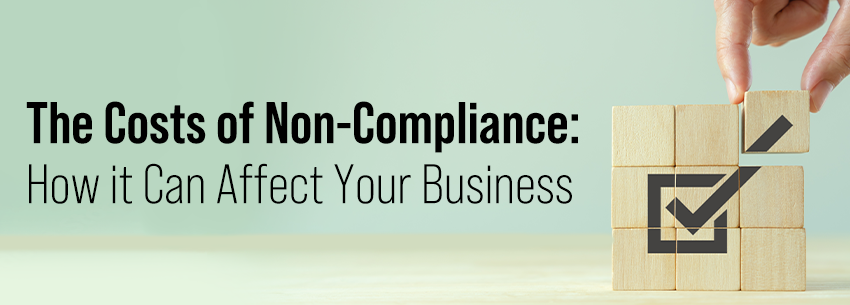We Help Businesses Thrive.
Peace of Mind is closer than you think.
Let's have a quick chat.

While compliance is a topic that excites few business owners, the reality is that it is an essential priority for every small and medium business. A solid compliance practice can help ensure your business is successful over the long term and helps ensure you operate within the legal framework and protect your customers’ interests.
A business might have to comply with many types of compliance depending on your industry, geographical location, type of data being stored, and other factors. For instance, healthcare companies must comply with HIPAA regulations, and organizations that handle credit cards or personal data must comply with PCI requirements. Meanwhile, if you are based in Europe or have customers in the region, you must meet GDPR requirements. You will want to do your research to understand which requirements apply to you fully.
What are the costs of non-compliance? While it varies from regulation to regulation, the costs across the board can be incredibly high. One of the most direct costs is the financial penalties of many of these regulations. The penalties can be substantial depending on the type of compliance standard violated, ranging from thousands to millions of dollars. For example, companies that are found to have violated data privacy laws can face penalties of up to four percent of their global revenue, as per GDPR.
There are also additional costs that may come along with non-compliance. Additional financial costs may include legal costs, including hiring lawyers, court costs, and other legal expenses. You may also face additional non-financial implications, such as loss of customers due to a loss of trust in your business and long-term reputation damage. Negative publicity can spread quickly; people will likely remember if your business has been involved in a compliance violation. This can make it difficult to attract new customers and retain existing ones, which can have a long-term impact on your revenue and profitability.
You can take several steps to ensure your business meets important compliance requirements. It would help if you started by fully understanding which compliance standards apply to you and what those requirements are. Then, you will want to see where you stand regarding meeting those required standards. Then, where there are gaps, you’ll want to plan to correct those. Finally, you’ll want to build a plan to regularly check in on compliance to ensure you meet those standards to avoid any potential fines or harm to your business.
While compliance may seem intimidating, it is essential to building a significant business. By taking simple steps to meet today’s requirements, you should feel confident that you are on the right path toward long-term success for your employees and customers.

Peace of Mind is closer than you think.
Let's have a quick chat.
Schedule a 15-minute introductory call with our support experts and we'll see what we can do for you.